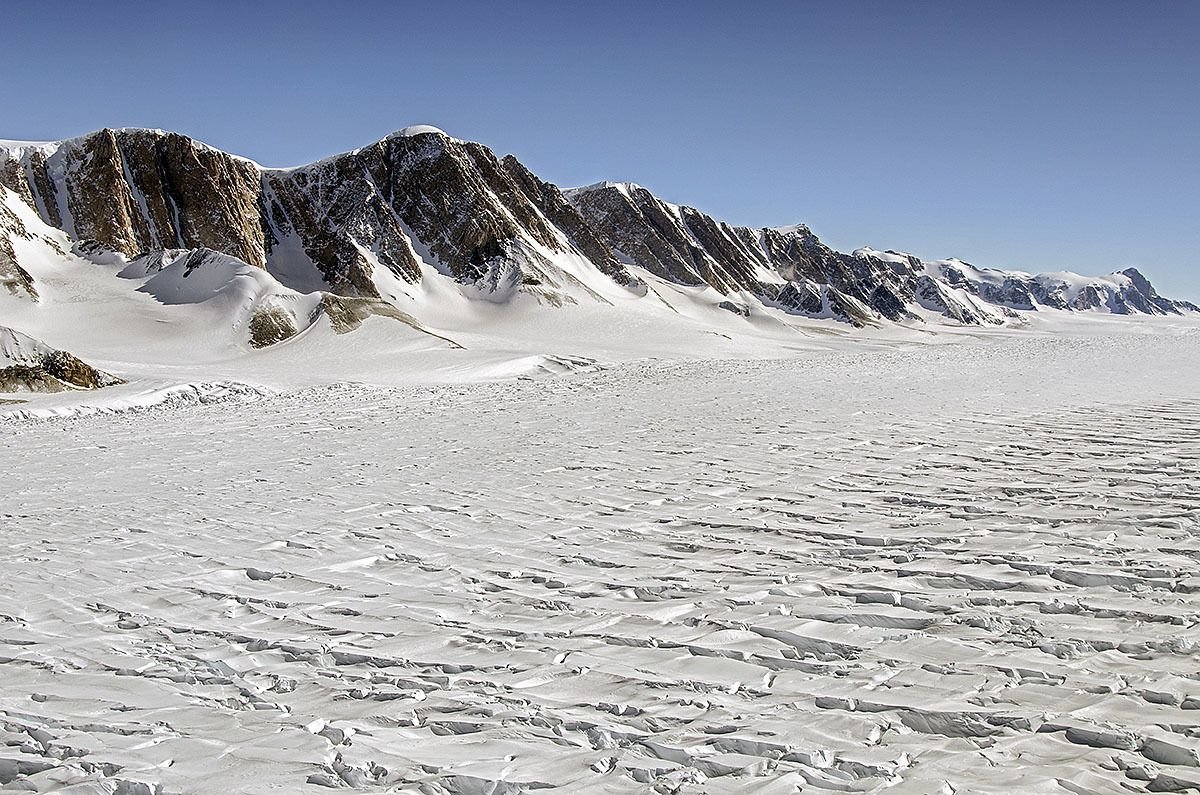Scientists set off a series of small explosions beneath the biggest glacier in East Antarctica in order to peer beneath the ice and find out what lay beneath.
The team, from the Australian Antarctic Program, was conducting seismic studies at the Totten Glacier—a huge body of ice that holds enough ice to raise global sea levels by an estimated 3 meters, or about 10 feet. It has long been known that this glacier is retreating, and that it has the largest thinning rate in East Antarctica.
Scientists believe warm water beneath Totten may be accelerating the loss of ice, but without being able to see beneath the surface, it is difficult to understand exactly what is going on—or predict how the glacier will respond to warming global temperatures.
The Australian team, based at the Casey research station, were hoping to find out what Totten rests on—bedrock, ocean or water trapped in subglacial lakes. Each of these will have a different impact on how fast the glacier moves. "If there's bedrock under the glacier, it's sticky and will move more slowly, but if there's water or soft sediments, the glacier will move faster," Ben Galton-Fenzi, a glaciologist with the Australian Antarctic Division, said in a statement.
The team set off a series of explosions 2 meters, almost 7 feet, under the glacier surface. These explosions sent out soundwaves that researchers could then track as they echoed off layers of ice and bedrock. By doing this, they were able to build up an image of what exists below.
Their findings revealed a vast network of subglacial lakes that may be contributing to Totten's retreat. "This study has shown us for the first time that there are substantial amounts of water contained in subglacial lakes, not far from the ocean, that we know very little about," Galton-Fenzi, said. "This research is critical in helping us predict how the melting of Antarctic glaciers will change the world's oceans into the future."
Last December, NASA said more of East Antarctica's glaciers were "waking up"—and this is a concern as scientists thought it was far more stable than the West Antarctic Ice Sheet, which experts believe is at risk of collapse. Maps published by the space agency indicate that the glaciers surrounding Totten are also losing ice—not at the same rate as glaciers in West Antarctica, but still enough to indicate that these frozen rivers are responding to changing conditions.
"The change doesn't seem random; it looks systematic," said Alex Gardner, a glaciologist with NASA's Jet Propulsion Laboratory in Pasadena, said in a statement. "And that systematic nature hints at underlying ocean influences that have been incredibly strong in West Antarctica. Now we might be finding clear links of the ocean starting to influence East Antarctica."
She said more research was needed to understand East Antarctica's glaciers—including what sits underneath them: "Only then can we be more conclusive in determining whether, if the ocean warms, these glaciers will enter a phase of rapid retreat or stabilize on upstream topographic features."

Uncommon Knowledge
Newsweek is committed to challenging conventional wisdom and finding connections in the search for common ground.
Newsweek is committed to challenging conventional wisdom and finding connections in the search for common ground.
About the writer
Hannah Osborne is Nesweek's Science Editor, based in London, UK. Hannah joined Newsweek in 2017 from IBTimes UK. She is ... Read more
To read how Newsweek uses AI as a newsroom tool, Click here.








